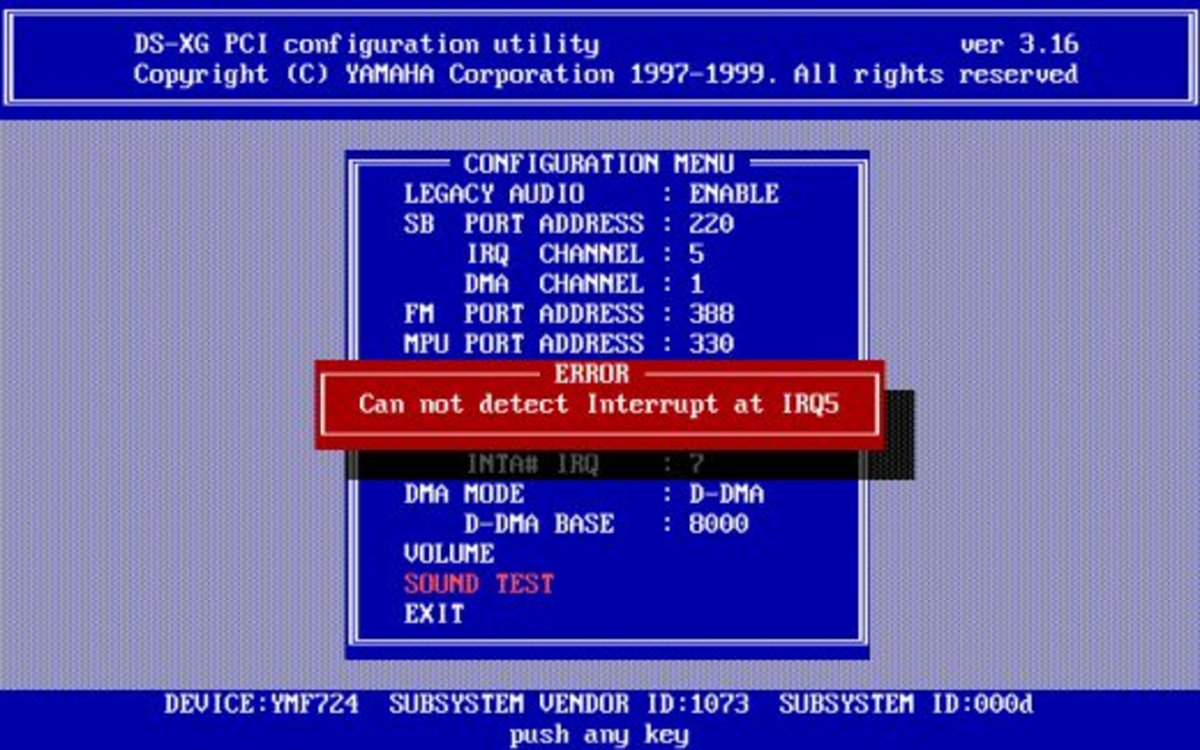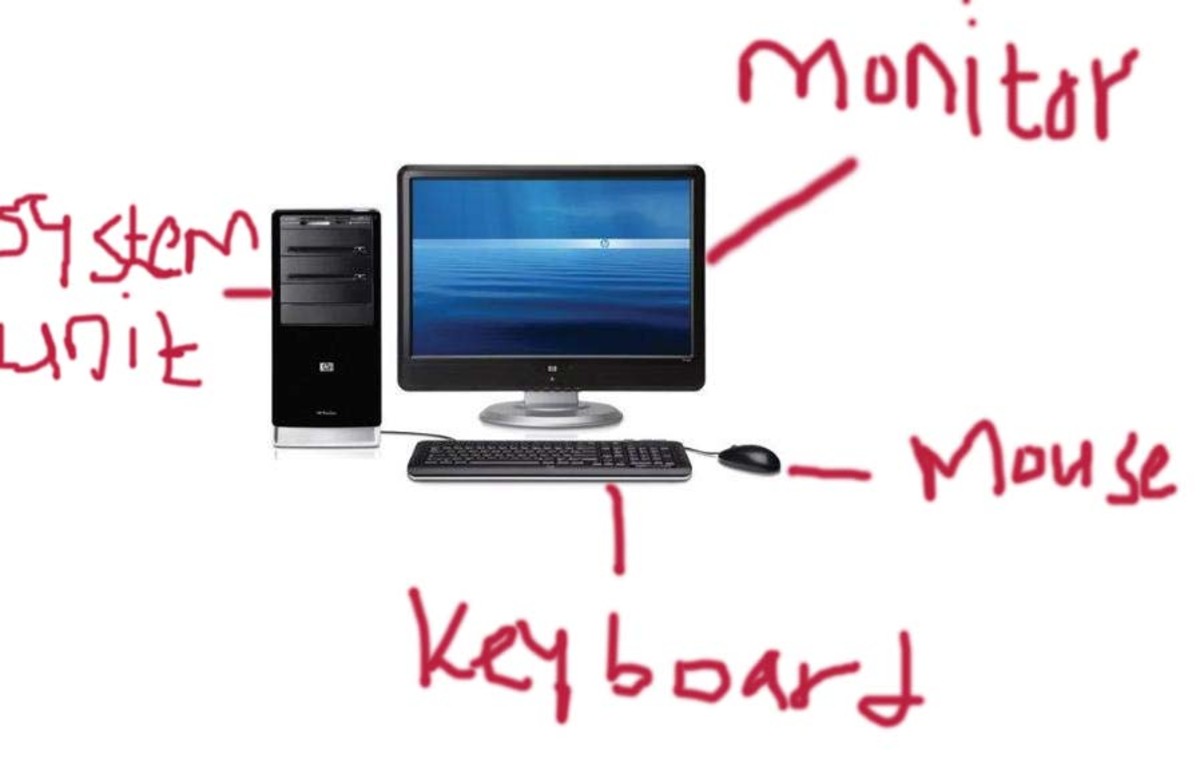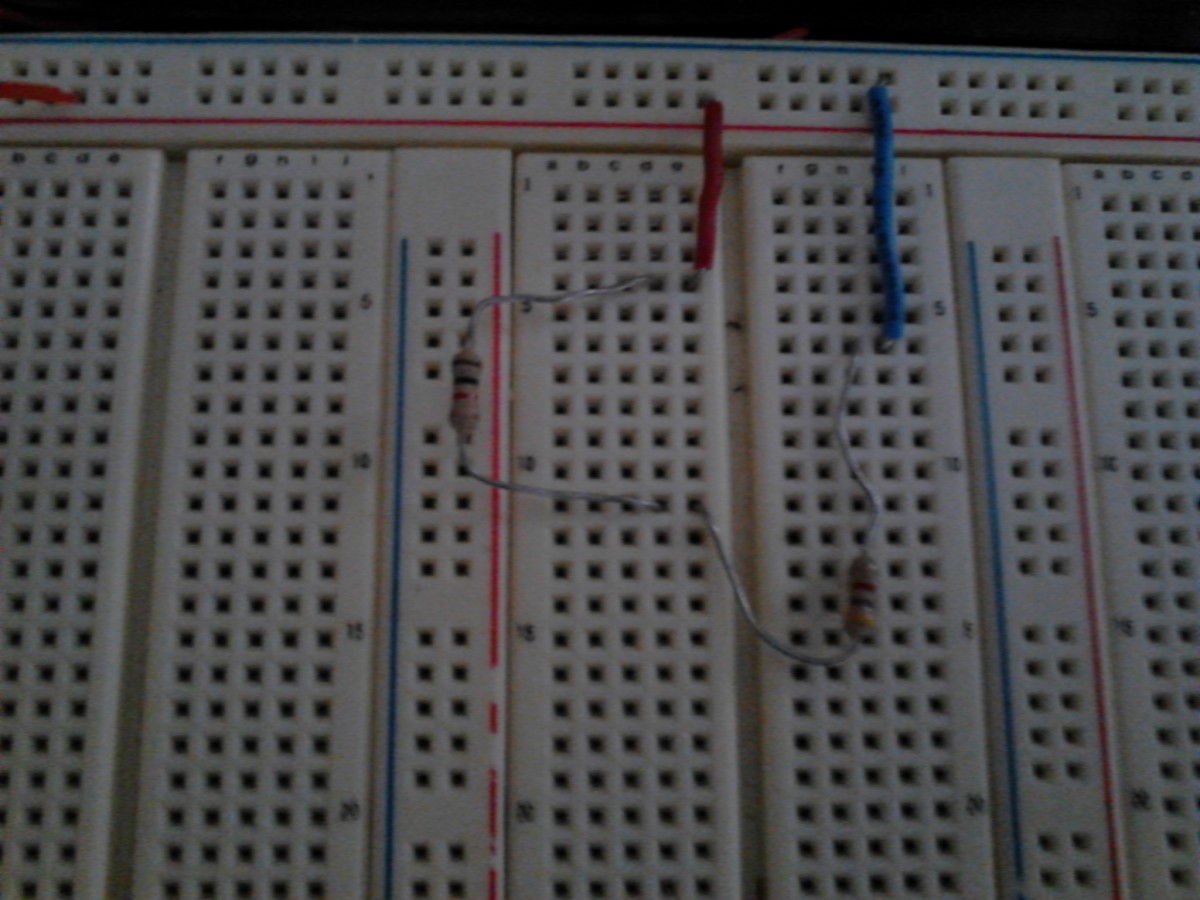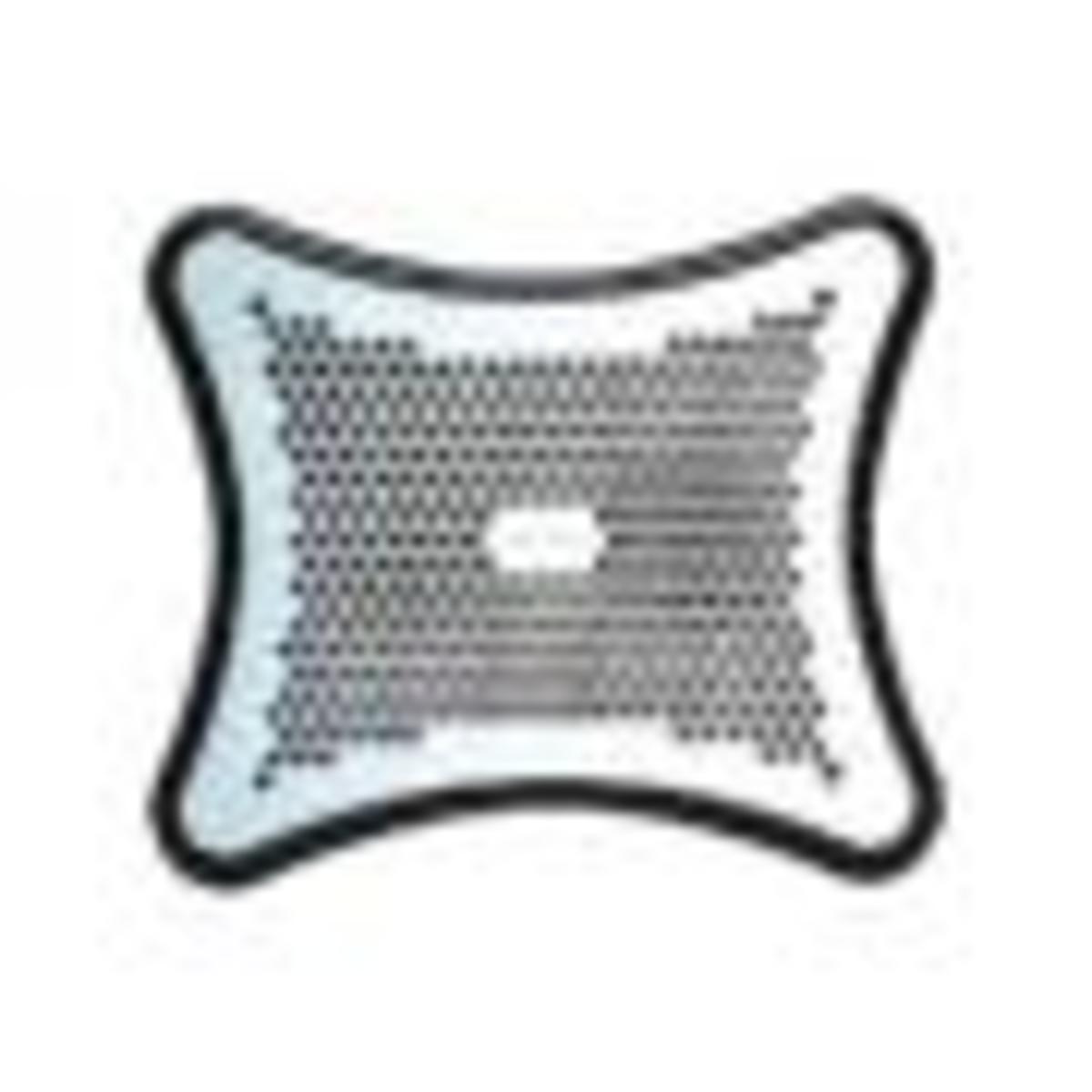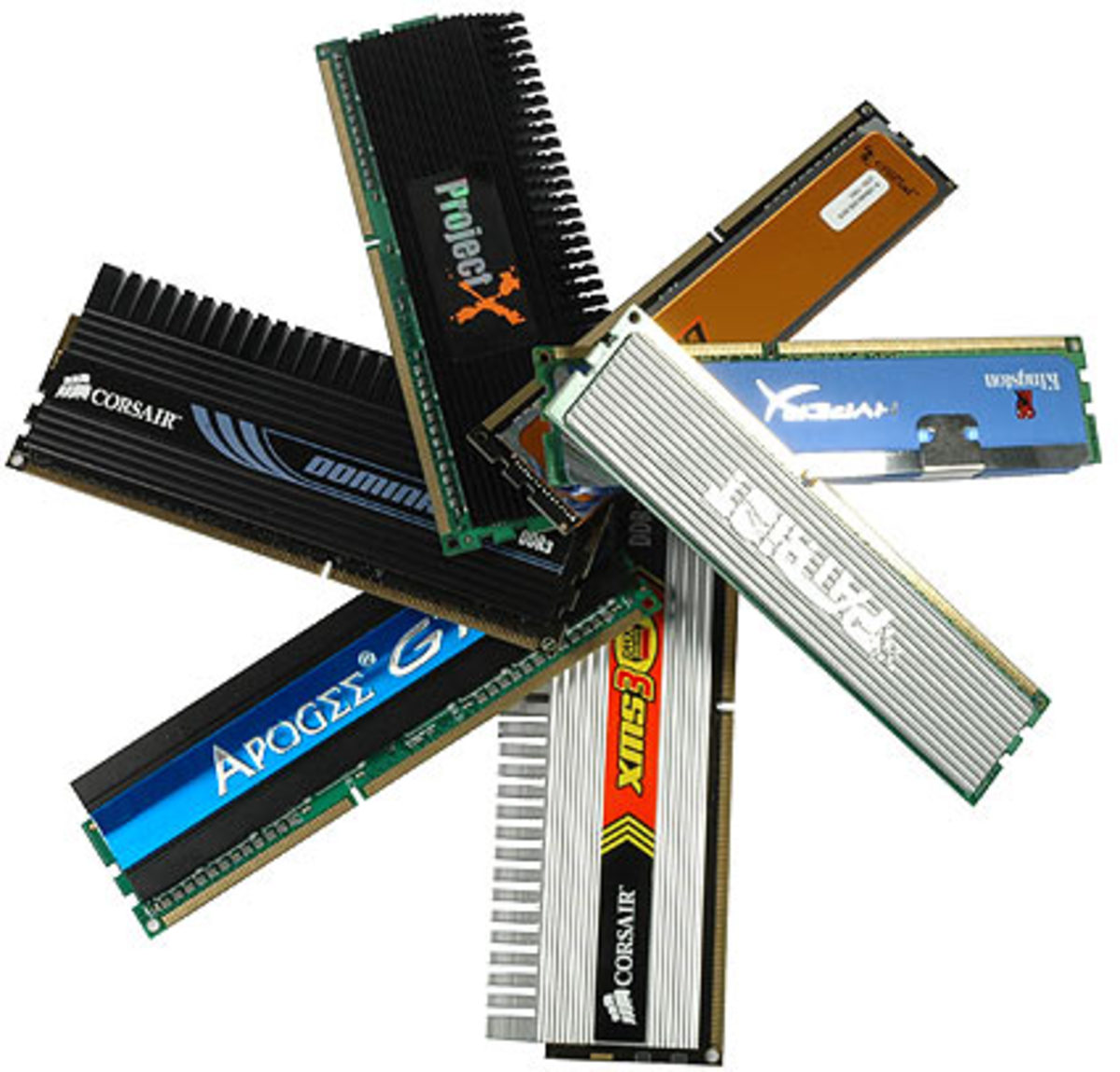The Future Of Computers & PC Hardware - Prediction & Roadmap To 2015
Gaze Into My Crystal Ball...
When attempting to have speculation on personal computing hardware updates, revisions or evolutions is purely, unless the information is a given, like gazing into a crystal ball. This speculative hub takes a look at a potential road map to the future & prediction trends of what we may possibly see from hardware manufacturers for computers over the next four years. This is dealing with straight up speculation for hardware on desktop, notebook & laptop computers. Mobile and Software speculative trends will be looked into with other hubs.
We know that technology is moving at an amazing speed and there is life in Personal Computing yet. There is much rapid movement in smartphones and tablets, but PC's in some shape or form will avail us for a while.
Note: All information provided in this hub is based on conjecture and speculation and is solely of the opinion of the writer only. Having said that I am taking a big bloody educated guess.

I Need BRAAAAAAAAAAAAAAAAAAINS!!!
The CPU, the main chip, Central Processing Unit, the 'brains' for a computer today. 4Ghz and billions of transistors with the latest from Intel and AMD sees us with the current crop of 4 core processors with 6-core just on the horizon. So what does the future potentially hold?
2011
AMD and Intel will release six core CPU's and I am predicting an 8 core CPU from AMD before Intel, yet this may occur in 2012-13. CPU's again will have higher transistor count, be made on 32nm core and have an increase to 40-48MB cache memory, possibly even more with 8MB per core. Power consumption will be through even tighter low power and (almost) independently powered cores. Hence when a computer only needs 1-2 cores, the remaining cores will 'virtually shut down'.
2012
AMD and Intel will release eight core CPU's (octo-core) and I am predicting an 10 core CPU from Intel, yet this may occur in 2013. CPU's again will have an even higher transistor count, be made on 20nm core and have an increase to 60MB+ cache memory, possibly even more with 12-16MB per core. Power consumption will be through even tighter low power and (almost) independently powered cores. Hence when a computer only needs 1-2 cores, the remaining cores will 'virtually shut down'. We will see a lot of transfer of GPU function come back to the CPU and may also see SMP (Symmetrical Multi Processing) or similar tech start to finally emerge into use in CPU.
2013
AMD and Intel will release twelve core CPU's. CPU's again will have an even higher transistor count, possibly the worlds first 1 trillion transistors, be made on 20nm core and have an increase to 80MB+ cache memory, possibly even more with 12-16MB per core. Computation of threads will change as we should start to see a phasing out of 32-bit computing, a higher increase of 64-bit computing (and Windows 8 on the market)
2014
By this stage a ceiling will have hit for transistor count and reduction of manufacturer size on die. 16 fully independent cores running with 4 cache sets. Parallel processing and massive computational power on a desktop CPU with massive amounts of GPU processing available. Each core will be independently powered, with Intel and AMD throwing out new tricks to create CPUs that can multi-process individual threads on many cores.
2015
We may finally get to see some true parallel processing happening by this stage, Xeon like processors finally hitting the desktop/laptop market. Multiple cored/multiple processors on the same motherboard. Possibly running 128-bit software on Windows 9 or version X.
What Will You Buy In The Future
Would You Buy In The Future One Of The Following
All Your Bytes Belong To Us
Hard drives - These items seem to keep doubling in size every year (like CPU's loosely following Moore's law) also SSD's are slowly gaining market traction and with each increase in size we are seeing a better price for each.
2011
By halfway through 2011, 4 terabyte internal hard drives will be common and 8 terabyte on the horizon. Western Digital or Seagate will produce a better hybrid SSD/HD drive with 64 Gibabyte SSD / 2 Terabyte drives available. SSD will still slowly gain market and 800Gb+ SSD drives will make an appearance and possibly 1Terabtye SSD by Christmas, but HD's will still be the norm. Western Digital will release a 15,000rpm 1 terabyte 6Gb eSATA internal drive for their Velociraptor range. Samsung will still be king when it comes to price per MB.
2012
We should start to see 8 terabyte internal hard drives being common and 16 terabyte being talked about. Again Western Digital or Seagate or another company will produce a better hybrid SSD/HD drive with 256/512 Gibabyte SSD / 4-8 Terabyte drive available. SSD will still slowly gain market and 800Gb+ SSD drives will make an appearance and possibly 1Terabtye SSD by Christmas, but HD's will still be the norm. Western Digital will release a 15,000rpm 1 terabyte 6Gb eSATA internal drive for their Velociraptor range. Samsung will still be king when it comes to price per MB.
2013
Now we start to find available 32 terabyte internal hard drives being common and 64 terabyte being talked about. Again Western Digital or Seagate or another company will produce a better hybrid SSD/HD drive with 256/512 Gibabyte SSD / 4-8 Terabyte drive available. SSD will still slowly gain market and 1 terabyte+ SSD drives will make an appearance and possibly 1.2 - 1.5Terabtye SSD by Christmas, but HD's will still be the norm. Western Digital will release a 15,000rpm 2.5 terabyte 6Gb eSATA internal drive for their Velociraptor range. External HDD system will start to emerge quite strongly for the SME & Home markets with 20 terabyte models connecting via USB 3.0 which now is over two years mature. Samsung will NO LONGER be king when it comes to price per MB, competition will be fierce with every manufacturer now bidding hard for your business, especially leading up to Christmas.
2014
A possible emergence of a tri-hybrid drive? DDR 4 cache/SSD interface and platter HDD with massive storage potential? DDR memory is still ultra quick, SSD is fast, especially with information transfer with a serial bus and platter technology for hard drives is over 65 years young. 'Hydra' data writing technology may emerge as talk and hearsay, the ability to READ and WRITE simultaneously, or potentially multiple read/ multiple write across many disks.
2015
SSD's will greatly increase in speed, capacities and drop massively in price. Platter tech based hard drives will still be around, yet will start to rapidly disappear from the SME & home markets, yet be a mainstay of enterprise markets for a few years to come. 'Hydra' data writing technology will emerge, which is a computer users dream, RAID 0+1 (striping and mirrored) across eight or more sets of disks, each with independent I/O controllers & hot swappable.
Intel CEO Suggest A Path For The Future Of Computers
I See You All Bright & Oooh look!!! Shiny Shiny!!!!!
Monitors - These items get better resolution each year and now we have the pandemonium of 3D technology doing the big push commencing from 2010.
2011
By the opening of 2011 we have a plethora and very confusing amount of connector types for monitors, VGA, HDMI, DVI, USB 3, Display Port, the list seems endless. I feel that due to the onslaught of 3D and HD video, a couple of these connector types are going to die out and quietly.
Power reduction and a slow increase in 3D will be the norm for this year.
2012
TFT (Thin Film Technology, current LCD and Plasma display) will see a marked increase to stay on target to be around for a long time. The emergence of 3D will attempt to broaden its market, yet this will still be hampered by availability of programs, sport, specialized TV or cable programs and specific movies will be the main thrust for driving 3D viewing further. Study and research into 4K (4096 * 4096 resolution screens and larger) resolution commences.
2013
I feel two major shifts will happen this year. OLED will arrive with a big big bang, providing a playback of video with high quality, clarity, brightness and a sharper image and on virtually any size screen, but with a principle price to match for early adopters (re:expensive to buy now, but cheaper as the tech improves and more units are sold) the second will be 'touchscreen mania' everywhere and I literally mean everywhere. Restaurants, tram/train & bus timetables and information kiosks will be using these screens to provide information for the consumer like never before (including of course: adverts)
2014
4K technology mentioned in 2012 starts to see an appearance and make impact on screen technology. The first frame-less LCD or Plasma screen, OLED gets cheaper. 80-100 inch screens common for home cinema. Apple will bring out (finally!) the iCarpet.....
2015
Better quality, cheaper and great looking screens running on virtually no electricity will be the norm this year. 3D without glasses to emerge in a big way this year. AMD or nVidia both great companies and drivers of the adoption in the realm of PC tech of video and the video card market, therefore indirect providers of screen displays and its technologies, to be purchased by a large player (HP, Sun Microsystems or even maybe IBM, Google or Apple)
I Am Sorry Dave, But I Can't Allow You To Do That!!!!!!
RAM - Random Access Memory, crucial in allowing our computers to interface almost all of our hardware peripherals and rely them back and forth with software and OS functions. Turn off the power and its all gone. Until the next time we start again. It gets larger, faster, and more capacious, but gets to need to use less and less juice.
2011
The opening of this year will see a significant rise with the sales of DDR3 based SDRAM modules. The reasoning will be that AMD’s Phenom II chips require it and Intels i5 and i7 range benefit from it. Current peak memory clock of 266Mhz may see future 300Mhz and 333Mhz (PC2400 & PC2666) released this year.
2012
Effective rising and potential peak sales of DDR3 memory for AMD and Intel based chips to support the growing multi-core and high bandwidth of I/O between CPU/RAM & peripherals. 1.2V or less prime targets especially for laptop, notebook and tablet type devices. Lower voltage will ensure lower power use therefore assisting to increase in battery life of these portable devices. 6 Gigabyte and 8 Gigabyte modules.
2013
Top section of peak sales of DDR3 memory hits this year. DDR4 most likely to make an appearance this year. Quad buffering a likely technology especially utilizing 64 bit addressing for the next version of Windows / Linux & Apple OS’s. 12 Gigabyte and 16 Gigabyte modules.
2014
Peak sales of DDR4 to arrive in the latter half of this year. Graphics based memory technology will slip into DDR tech with more likely much larger amounts of RAM, larger bridges, a pre-fetch system, lower under 0.76 voltage, 28nm +/- manufacture and 1024 bit addressing. 24 Gigabyte modules.
2015
With multiple cores for CPU’s will most likely see multi-tasked memory blocks that will utilize 16 – 32 Gigabyte memory addressing for each core. If this is the case, we will need a fundamental change to the ATX setup of motherboard manufacture to accommodate multi-core, multi-memory address and usage. In essence will will see a shift in motherboards and a new technology of an advanced version of the successor to DDR5 altogether.
Your Most Important Future Update
What will be the most important PC hardware item that will influence your buying in the future?
The Future Is Now
With crystal ball gazing and attempting to provide a helpful and insightful guide on a 'possible' path of computer hardware is always fun. Its no harder than trying to find an apple in a dark room to cut with a blindfold on and you don't know where the knife is either.
One item to think about to take away today is that there is something on the horizon that we have not even seen yet and it will most likely be earth shattering news when it arrives or it will be a dinkum iphone 7 mini most likely.
Future Technologies This Writer Would Like To See
There is one technology I have seen written about from time to time, albeit, its been only touched on when spoken about or written by article writers for electronics and personal computing magazines, it even does have a small amount of use already (Near Field Communication & Bluetooth). That is what today, I am calling SPAN - Short Personal Area Network.
I see SPAN as being technology providing two benefits. Firstly using blue-tooth or similar wireless technology for pure wireless connection of ALL external hardware, mouse, keyboard, monitor, multifunction printer, network device, broadband modem, yet have it all 'just-work-straight-out-of-the-box'. I am not referring to Near Field Technology as this is slightly different and relates to more using electronic devices for purchase and sales transactions at Shops with Point Of Sale devices.
Secondly if you have the above setup with the main PC being 'Device A' with all external devices being 'peripheral A1, A2, A3' etc, then you can start to 'pair up' other peoples devices with yours on this personal area network, very similar to seeing people being able to pair up their game devices with each other, this technology, if not already (think blue-tooth pairing on cell phones), will spill over first into tablet and net book tech and then other personal computers.
So my 'Device A' would be able to communicate with your 'Device B' when I am within a few feet of yours. This would also allow for pairing of up to four unique items only (such as a multi-function printer to my laptop only, but not my next door neighbors computer) and with all the usual suspects for security setup as well. With this enabled to remember specific networks, it becomes feasible for printing, communications and gaming. And we are starting to see this on tablet and smart phones and apps that do it already....

